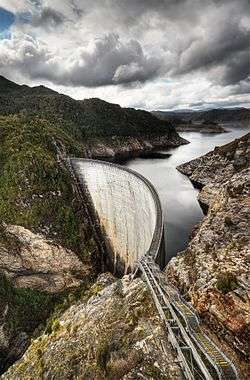Economy of Tasmania

Traditionally the main industries of Tasmania, Australia, have been: mining, including copper, zinc, tin, and iron; agriculture; forestry; and tourism. Significantly in the 1940s and 1950s there had been a hydro-industrialisation initiative embodied in the state by Hydro Tasmania. These all have had varying fortunes over the last century and more, involved in ebbs and flows of population moving in and away dependent upon the specific requirements of the dominant industries of the time.
There had been a decline in manufacturing during the 1990s, leading to a drain of some of the island's trained and experienced working population to mainland Australia. The major urban centres such as Melbourne and Sydney are popular destinations.
The state has a large number of food exporting sectors, including seafood (for example, Atlantic salmon, abalone and crayfish).
it appears that the Tasmanian economy is improving since it has managed to loosen itself from the imagined benefits of mining and logging. today tourism is the growing backbone of the Tasmanian economy thriving on the back of the island's natural beauty and diversity. there are growing numbers of tourists from internationally but also interstate. Mercury October 20, 2016 http://www.themercury.com.au/news/tasmania/tasmanias-economy-flying-high-reveals-latest-mystate-update/news-story/f4d4c0ee3a721bed90bbbcee900c3ca1
Economic conditions
Today, a significant number of employed Tasmanians work for the government. Other major employers include the Federal Group, owner of several hotels and Tasmania's two casinos, and Gunns Limited, the state's biggest forestry company, which has recently gone into voluntary administration. In the late 1990s, many national companies based their call centres in the state after obtaining cheap access to broad-band fibre-optic connections.
Historical weaknesses include: A lack of federal infrastructure highway, lack of a gold rush, lack of open immigration initiatives, lack of population, decline in the wool and mineral economies, lack of early colonial initiatives, or lack of foreign investment. For the length of the history of Tasmania there has been a continuing exodus of youth to mainland Australia in order to seek employment opportunities.
Apparently the state's housing market was undervalued in the early part of 2000, and a large boom in the national housing market finally made Tasmanian housing prices rise dramatically. This has in part been attributed to increased levels of interstate[1] and overseas migration. A shortage of rental accommodation has caused problems for many of Tasmania's low income earners.
Small business is a large part of the community life and it is believed by many that the business environment in Tasmania is not an easy one to survive in. However, there have been many success stories, such as Incat, Moorilla Estate and Tassal.
Exports
The value of monthly merchandise exports for overseas averaged $232.6 million in the year to the end of July (2016), according to Australian Bureau of Statistics original terms figures. They averaged $214.6 million in the previous year.
Electricity consumption and supply
See also Energy in Tasmania
Most of Tasmania's electricity is produced by hydroelectric dams. A HVDC link to the mainland was established in 2005, which allows electricity to be imported and exported according to conditions.
Note: All of the following statistics are sourced from the document "Hydroelectricity in Tasmania"
- Electricity Consumption: 10,441 GWh (average 2004-2009)
- Residential: 1,984 GWh (19%)
- Commercial and Industrial: 8,457 GWh (81%)
- Electricity Supply: 11,049 GWh (2007-2008)
- Hydro: 7,100 GWh (64.3%)
- HVDC mainland link net inflow: 2,293 GWh (20.8%)
- Gas: 1,200 GWh (10.9%)
- Wind: 429 GWh (3.9%)
- Landfill: 27 GWh (0.2%)
See also
References
- ↑ ABC Television News (Tasmania), 7 p.m. Friday, 27/1/06